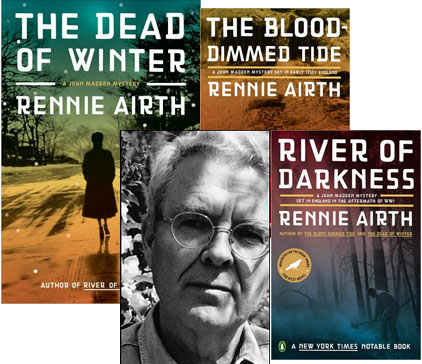Nic Brown’s Perfect Storm (For Writing about “People and Some Dogs,” That Is)

I don’t remember much about Hurricane Hugo; in September 1989, I was already deep into my sophomore year of college in the middle of Indiana, well out of hurricane country. But as Nic Brown points out in this essay about his new collection of “Hugo stories,” Floodmarkers, I don’t really need to know that much about what happened then. I remember what it was like getting stuck in Hurricane Bob two years later—a lot of not-much-happening punctuated by rain and wind—and once you get past that, you can begin to relate to Brown’s characters on more fundamental levels, discovering the variety of responses they have to a simple external event.
In North Carolina, where I live, Hurricane Hugo is never discussed. Hurricane Fran, which devastated the state in 1996, tops the conversational list when it comes to Carolina catastrophe. Hugo hit years earlier, in September 1989, and wreaked havoc on Charleston (which is in South Carolina, folks) and then moved up into Charlotte with a wallop. At the time, it was the most destructive storm since Hazel in 1954. The Katrina of Charleston, I’ve heard it called since (which is hyperbole, of course, but you get the idea). Then Fran arrived, and was worse. I guess this is when Hugo disappeared from conversation.
But if you mention Hugo—if you bring it up directly—everyone here has a story. Rarely are these momentous in the near-death or total destruction sort of way. Usually they’re more like, “I didn’t even know the storm was coming and then a branch landed on my car and the electricity went out and I got in a fight with my brother.” This is why Hugo worked well for my fictional purposes.
Floodmarkers is a linked collection of stories set during the day Hugo blows through the fictional North Carolina town of Lystra. But the book isn’t about Hugo. It’s about the people living in Lystra and the ways the storm changes their daily lives just enough to make room for the singular to occur. Lystra is set in the Piedmont, where only the edge of Hugo reached. If I had set the book in Charleston, or even Charlotte, it would have run the risk of becoming a historical fiction about a Hugo. And I don’t care about Hugo. Because Hugo is a storm, and to tell you truth, when it comes down to it, I really only care about people. And some dogs. So the book is about people. And some dogs.
27 July 2009 | guest authors |
Rennie Airth: Murder Between the Wars

I recently read River of Darkness, a fantastic police procedural set in England, a few years after the First World War, pitting a serial killer against a Scotland Yard detective who is doubly haunted by his experiences in the trenches and the deaths of his loved ones in the influenza epidemic. It’s a carefully paced mystery that spends a great deal of time with its characters, drawing out 1920s British society through psychological detail. Rennie Airth has written two more novels about the detective, John Madden, each set a decade or so apart from the last. I’m looking forward to reading The Blood-Dimmed Tide and The Dead of Winter in turn, and I got to wondering how Airth came to develop this series.
The first impulse to embark on the Madden series came some years ago from an idle thought: How would the police have dealt with the problem posed by serial killers before they were recognized as such; before the very concept of forensic psychology had been developed? By chance, at about the same time, I was going through some old family albums and came across a scrapbook which my grandparents had kept in memory of their elder son who was killed in the First World War. Leafing through it I discovered something I hadn’t known before: The telegram they’d received advising them of his death had arrived in the same week as another telegram from the War Office informing them that their second son, my father, who like his brother was an officer in the British army, was missing. Fortunately he proved to have been captured, but I was struck by how appalling these twin blows must have seemed to them at the time.
From then on I began to read more about that terrible conflict and the deep scars it left on society. These two lines of thought came together and eventually led to the first of the Madden books, River of Darkness, in which the psychological damage inflicted on both protagonists, hunter and hunted, by their experiences in the trenches plays a major part in the story.
I decided early on, too, that I wouldn’t get trapped in a long series following the usual pattern of ‘another case for Inspector Madden.’ Rather, I wanted to place Madden and those around him, his family and colleagues at Scotland Yard, in the context of their time, and to see their lives develop quite apart from the mystery elements in each story. Hence the clear historical links which all three books have. The first, as I said, takes place in the shadow of the Great War; the second, The Blood-Dimmed Tide, against the rise of fascism in Germany and the looming threat of another war; while the third and most recent, The Dead of Winter, has the bombed-out ruins of London in the closing months of the Second World War as a backdrop.
21 July 2009 | guest authors |

 Our Endless and Proper Work is my new book with Belt Publishing about starting (and sticking to) a productive writing practice.
Our Endless and Proper Work is my new book with Belt Publishing about starting (and sticking to) a productive writing practice. 
